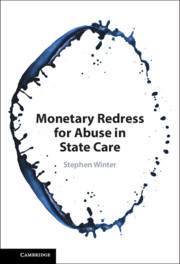Acknowledgements
Many people and organisations contributed to this book. I used sabbatical leave and funding from Waipapa Taumata Rau ǀ University of Auckland in 2014, 2018, and 2022 for researching and writing. During that period, University College Dublin (UCD), Ireland, and Griffith University, Australia, hosted me while I was conducting field research, and I thank Ben Tonra of UCD and Kathy Daly of Griffith for their hospitality. I also thank Kathy Daly and Juliet Davies for providing research material from their archives.
Interviewees contributed much to the work. Nearly every institution I contacted made serious efforts to provide assistance, and interviewees were generous with their valuable time and expertise. I also benefited from the hospitality of survivor agencies in Australia, Canada, Ireland, and Aotearoa New Zealand.
I deeply appreciate those who helped me with writing. Sonja Cooper, Geoff Kemp, Amanda Hill, David MacDonald, Kathy Smits, Phillipa White, Martin Wilkinson, and Emma Winter all read and commented upon chapter drafts. William and Roxane Winter helped me compile Appendix 3. Jordan Hanford read the entire book in draft, and his effective work as an editorial assistant saved me many scholarly blushes.
I thank Marianne Nield and Rachel Imrie of Cambridge University Press for their support and guidance. I would also like to thank Finola O’Sullivan, who initially supported the project. I am grateful to two anonymous readers for their helpful suggestions and guidance. The book benefited from expert editorial work provided by Aiswarya Narayanan and the team at Straive.
I acknowledge my use of previously published material. Chapter 3 is a revised version of my article ‘State Redress as Public Policy: A Two-Side Coin’, first published in the Journal of Law and Social Policy, Volume 31, 2019. Chapter 11 borrows some material from ‘Tools for Tragedy: Procedures for Assessing Historic Redress Claims’, Politics and Policy, 49(1), 162–85 (https://doi.org/10.1111/polp.12385). I thank Wiley & Sons for permission to use that material.
Finally, I thank Keith Wiffin for agreeing to let me start the book with his story.

